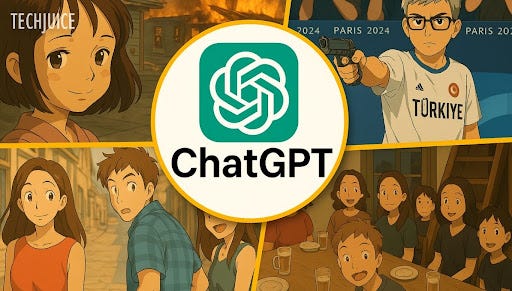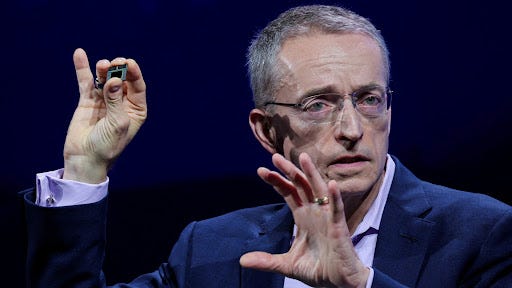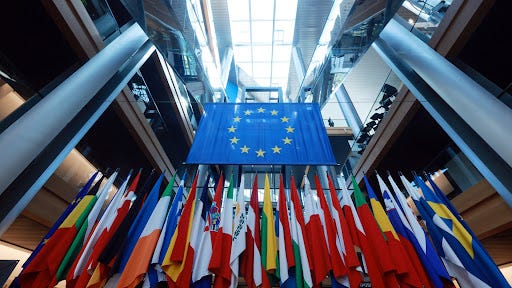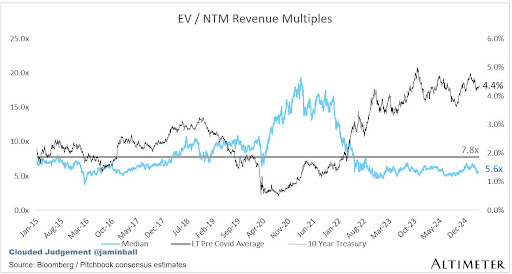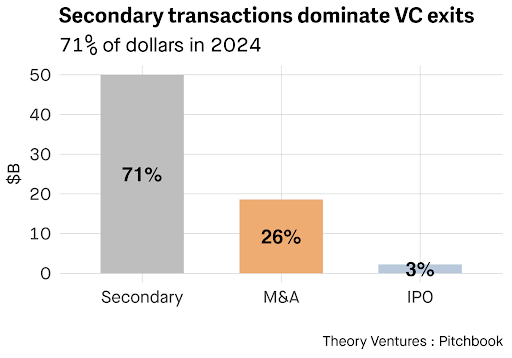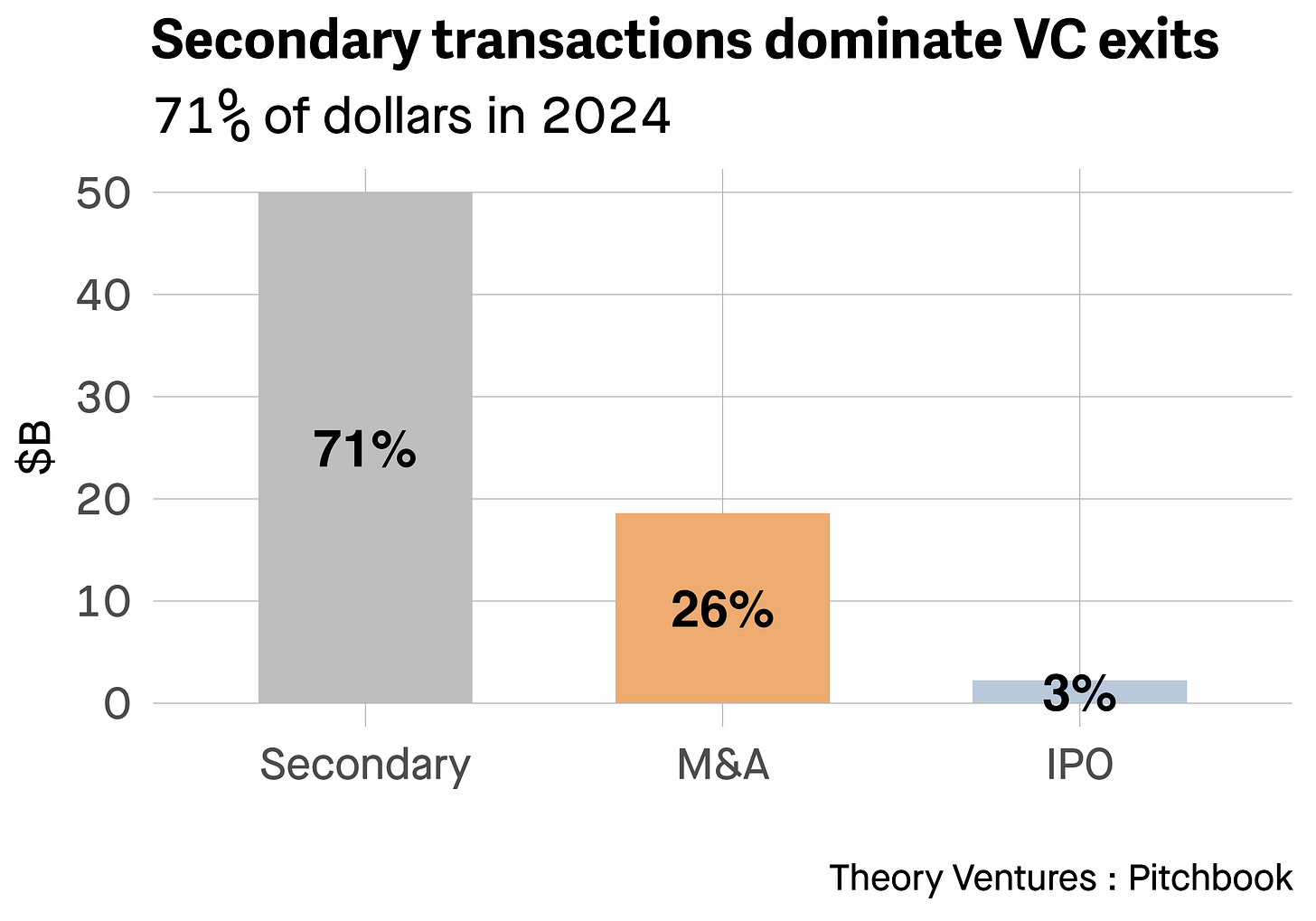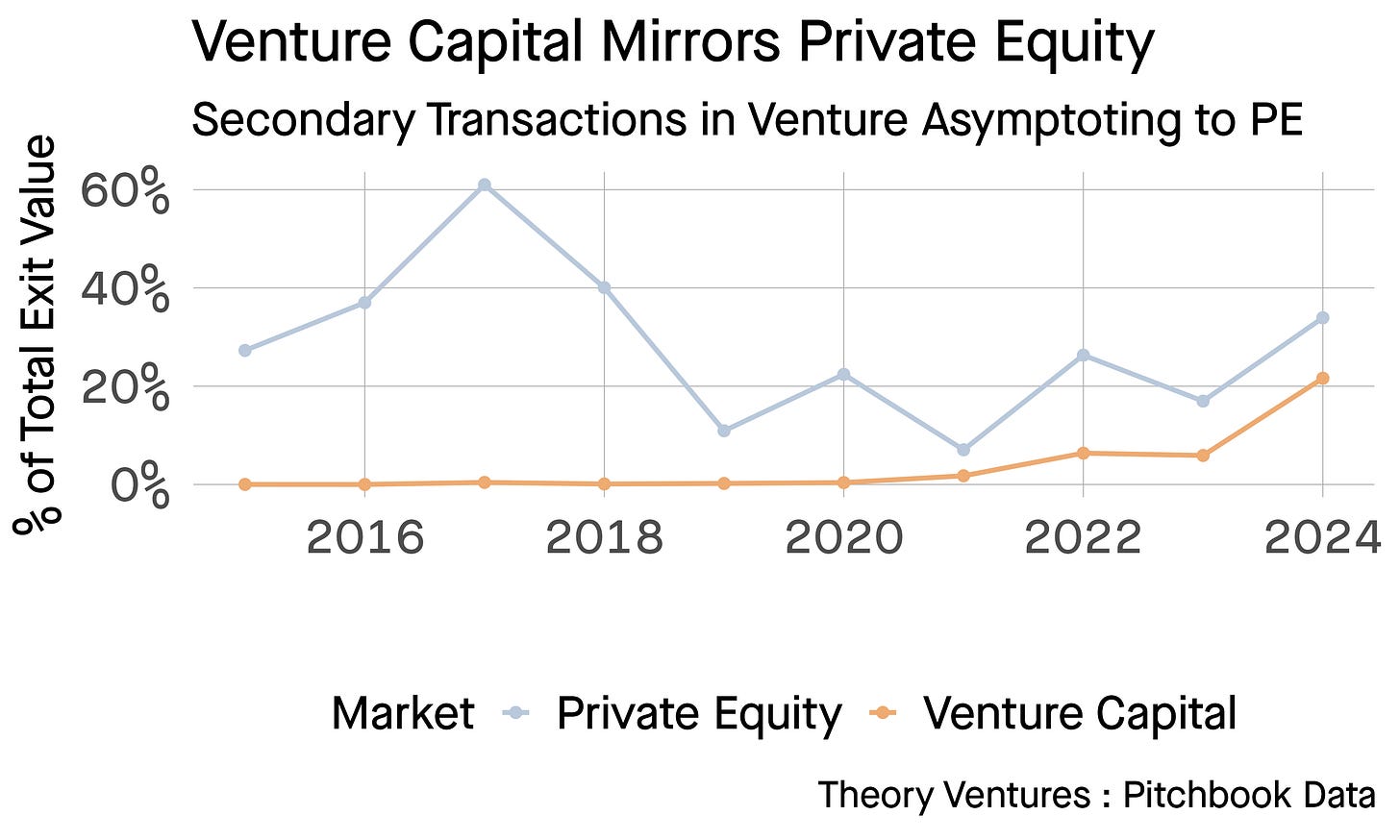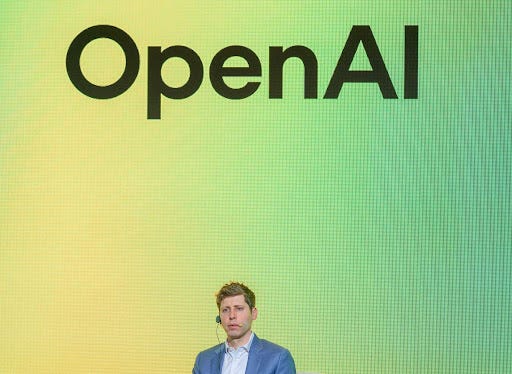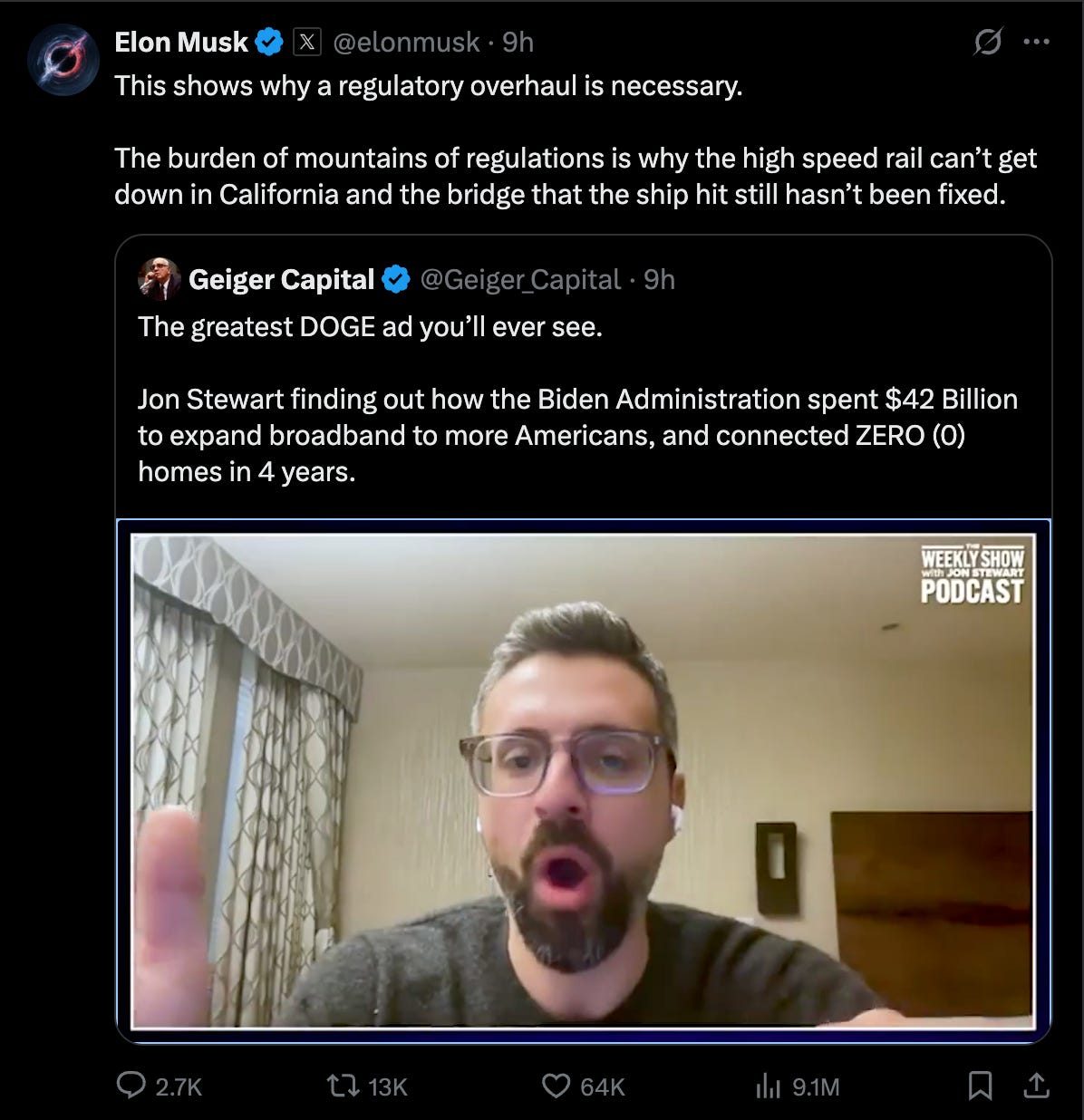Contents
Essays
OpenAI and Publishing
Nationalism
Trump’s Tariffs Leave Automakers With Tough, Expensive Choices
TSMC’s $100bn pledge to Trump will not revive US chipmaking, says ex Intel Chief
AI
OpenAI adopts rival Anthropic’s standard for connecting AI models to data
An Interview with Snowflake CEO Sridhar Ramaswamy About Data and AI
Adobe Acrobat AI Assistant Is Exactly What Anyone in Business Really Needs
As AI Takes His Readers, A Leading History Publisher Wonders What’s Next
Venture Capital
The Week’s Biggest Funding Rounds: Fleetio And Mercury Nab Massive Rounds
UK VC funding activity remains mixed in early 2025 but signals strategic shift, says GlobalData
The Hard Truths of Raising Fund Two: Rachel ten Brink on LPs, Staying Scrappy, and Beating the Odds
OpenAI will reportedly close its SoftBank-led $40B round soon
Interview of the Week
Startup of the Week
Post of the Week
Editorial: AI Gets Into Publishing
AI Gets Into Publishing: OpenAI's Image Generation Revolution
Before diving into this week's main topic, I want to offer a quick overview of what we're seeing unfold. OpenAI has integrated powerful image generation capabilities directly into GPT-4o, making AI-generated visuals more accessible, practical, and sophisticated than ever before. This development represents not merely an incremental improvement but potentially a fundamental shift in how we think about content creation and publishing in the digital age.
Mike Loukides writing at O’Reilly media focuses on the nature of paradign shift (Thomas Kuhn). He argues that AI is not merely advancing incrementally but catalyzing a structural transformation in science, technology, and business. Much like the internet or mobile computing disrupted existing frameworks, AI is reshaping how problems are defined, solved, and validated across industries.
This week’s announcements validate that view.
The New Visual Frontier in AI
OpenAI made waves this week by rolling out its native image generation capabilities powered by GPT-4o to all ChatGPT users across Free, Plus, Pro, and Team tiers. This isn't just another feature update – it's a significant paradigm shift in how AI interacts with visual content creation.
What makes this announcement particularly noteworthy is the seamless integration with GPT-4o's language capabilities. Unlike previous generations of image creation tools that operated in isolation, this new system leverages the AI's knowledge base and conversation context when generating images. The result is a remarkably coherent experience where text and visuals work together with unprecedented harmony.
OpenAI's announcement emphasizes that this technology "excels at accurately rendering text, precisely following prompts, and leveraging 4o's inherent knowledge base and chat context—including transforming uploaded images or using them as visual inspiration". The practical implications here are substantial – users can refine images through natural conversation while maintaining stylistic consistency, support complex prompts with up to 20 different objects, and generate images based on uploaded references7.
What's particularly impressive is the system's ability to handle text within images – a notoriously difficult challenge for previous image generation models. This capability transforms AI image generation from primarily decorative applications to truly functional tools for business communication and publishing.
The Publishing Revolution Begins
The implications for publishing are profound. Traditional publishing has always involved a complex dance between writers, editors, designers, and illustrators – a process that can be time-consuming and expensive. With tools like GPT-4o's image generation, we're witnessing the democratization of visual content creation in real-time.
Consider what this means for digital publishers and content creators. A writer can now generate contextually relevant, high-quality images that perfectly complement their text without leaving the same interface where they're crafting their words. This reduces friction in the creative process and potentially accelerates content production timelines significantly.
For small publishers and independent creators, this technology levels the playing field. Access to professional-grade visuals has traditionally been a barrier to entry in publishing, requiring either significant investment in design talent or compromise on visual quality. GPT-4o's image generation capabilities make sophisticated visual content creation accessible to virtually anyone with an internet connection56.
The system's ability to accurately render text within images opens up possibilities for infographics, diagrams, charts, and other information-rich visuals that were previously difficult to produce without specialized skills7. This is particularly valuable for educational content, technical documentation, and data visualization – areas where clear, accurate visual communication is essential. Adobe should be every concerned.
Disruption
It's important to acknowledge that we're in the midst of significant disruption in publishing. The search results mention that traditional publishers are grappling with how AI-driven tools are disrupting established economic models and audience engagement1. The World History Encyclopedia reportedly saw a 25% drop in traffic due to Google's AI Overviews, highlighting the real challenges that content creators face in this evolving landscape.
There are legitimate legal and ethical questions at play. The search results reference copyright lawsuits against OpenAI, including one by the New York Times that has been allowed to proceed. These concerns shouldn't be dismissed lightly, but I remain optimistic that we'll find the right balance between innovation and protecting creators' rights.
Overall, I see tremendous opportunity ahead. The integration of sophisticated image generation directly into a multimodal AI system like GPT-4o represents a genuine leap forward in how we create and share information. It enables new forms of expression and communication that weren't previously possible.
Consider the examples OpenAI showcases – from detailed technical diagrams to photo-realistic images with accurate text7. These aren't just decorative elements; they're functional tools for communicating complex ideas visually. This capability has profound implications for everything from educational content to marketing materials, technical documentation, and creative storytelling.
The Economics of Innovation
This technological revolution doesn't happen in a vacuum. It's worth noting that OpenAI is reportedly close to closing a massive $40 billion funding round led by SoftBank2. This level of investment underscores the perceived value and potential of AI advancements like GPT-4o's image generation.
As noted in the article, "substantial capital is becoming critical for scaling advanced AI research". The injection of $40 billion will likely accelerate OpenAI's ability to refine and expand these capabilities further, potentially addressing some of the limitations mentioned in their announcement, such as occasional cropping issues with longer images and challenges with rendering more than 10-20 distinct concepts simultaneously.
This massive financial backing suggests that we're only seeing the beginning of what's possible with AI-powered content creation. The pace of innovation is likely to accelerate, bringing even more sophisticated tools to content creators and publishers in the near future.
A New Era for Creators
What excites me most about these developments is how they empower creators of all kinds. The democratization of sophisticated visual content creation tools means that ideas no longer need to be constrained by access to design resources or technical expertise.
For publishers specifically, these tools offer a way to create more engaging, visually rich content while potentially reducing production costs. This could be particularly valuable as traditional publishers seek to adapt their business models in response to changing audience behaviors and expectations.
The technology's ability to maintain stylistic consistency across multiple images could be especially valuable for brand publishers and content marketers who need to produce large volumes of visually cohesive content. Similarly, the integration with GPT-4o's knowledge base means that creating accurate, information-rich visuals becomes significantly more accessible.
Looking Ahead
As we look to the future, I believe we're witnessing the early stages of a fundamental transformation in how content is created, distributed, and consumed. The barriers between different types of media – text, images, video, audio – are increasingly blurring as AI systems become more sophisticated and multimodal.
For publishers willing to embrace these changes, there are tremendous opportunities to create richer, more engaging content experiences. Those who adapt quickly may find themselves with significant advantages in capturing and retaining audience attention in an increasingly crowded digital landscape.
OpenAI's integration of powerful image generation directly into GPT-4o represents a significant milestone in this journey. It's not just about making pretty pictures – it's about fundamentally reimagining the tools and processes of content creation for the digital age.
These technologies will enable an explosion of creativity and knowledge sharing. Despite the legitimate challenges and disruptions these changes bring, I believe we're heading toward a more visually rich, expressive, and accessible publishing ecosystem.
And that's something worth being excited about.
Essays of the Week
AI and the Structure of Scientific Revolutions
Author: Mike Loukides Source: Radar Published: March 27, 2025 Classification: AI Subcategory: Scientific Revolutions
Thomas Wolf’s blog post The Einstein AI Model sets the stage for a discussion on the limits of current AI models, arguing that while they excel at recombining existing ideas through probabilistic methods, they fall short when it comes to creating truly revolutionary concepts. Wolf contrasts his view with Dario Amodei’s perspective in Machines of Loving Grace, and suggests that groundbreaking discoveries—like Copernicus’s heliocentric model, Einstein’s theory of relativity, and the development of CRISPR—are much more than simple recombination of prior knowledge.
Drawing parallels with Thomas Kuhn’s The Structure of Scientific Revolutions, the article emphasizes the distinction between "normal science," which works within established paradigms, and paradigm-shifting breakthroughs that redefine our understanding of the world. Just as revolutionary shifts in physics required a departure from Newtonian mechanics to embrace relativity and quantum theory, the realm of art and music also thrives on the ability to break away from tradition. Creative innovation, whether in science or the arts, depends on challenging the status quo rather than reiterating past ideas.
The discussion then shifts to the technical challenges of creating an AI that can embody both the safety of "normal science" and the boldness of revolutionary thought. A critical element missing from current models is "volition"—the intrinsic drive or will to pursue novel, uncharted ideas. Recent observations, such as AI systems exhibiting unusual behaviors like alignment faking or even cheating at chess, hint at early signs of this potential, though they also underline the risks inherent in such capabilities.
Ultimately, the article calls for a balanced approach to AI development, one that recognizes both the utility of recombinative models and the transformative potential of AI capable of true innovation. As we build technologies that increasingly mirror human creativity, understanding and managing these risks become paramount.
The DC Revolution Will Not Be Centralized
Author: Grace Carney Source: Writing – Union Square Ventures Published: March 27, 2025 Classification: Industry AnalysisSubcategory: Energy Infrastructure
A quiet insurgency is reshaping our energy world. Modern technologies—solar panels, EVs, and computing devices—run on DC power, yet they are forced through an outdated AC grid. This results in numerous power conversions that waste 5-10% of energy at each step. What used to be a simple conversion process for powering your laptop from a gas plant now involves multiple energy losses, especially as we integrate home batteries and renewables.
The historical DC vs. AC battle erupts from the 1880s. Thomas Edison championed a direct current system that was simple and efficient, while Tesla and Westinghouse proved alternating current could transmit power over long distances using transformers. Although AC prevailed then, nearly every modern device ultimately runs on DC. Today, high-voltage DC is regaining relevance by offering more efficient long-distance power transmission and by better aligning with renewable energy generation.
Our AC grid now faces unprecedented strain. Data centers demand power at scales rivaling cities; EV charging stations multiply faster than the grid can expand; and DC-native renewable energy projects struggle against the inherent inefficiencies of the AC system. This stress leads to multi-year waiting lists for grid connections, billions in energy losses, and a noticeable bottleneck in energy distribution.
A new order is emerging. In regions like China, state-led HVDC projects are reshaping the grid from the top down. In more fragmented markets, such as in the US, grassroots innovation paves the way. Startups like DC Grid are pioneering DC-native microgrids to support data centers and expedite EV charging without the dependency on cumbersome utility frameworks.
This evolution is not about replacing the AC grid overnight—it’s about building a parallel, decentralized DC infrastructure from the bottom up. The gradual coalescence of these DC islands promises a more resilient, efficient power system, aligning with Edison’s original vision, yet reimagined for today’s renewable and digital age.
Google (And all of Tech) to News: Shove It.
Author: John Battelle Source: John Battelle's Search Blog Published: March 26, 2025 Classification: Industry Analysis Subcategory:News Business
There’s an old maxim in the news business: Stories where a dog bites a man are mundane—but a man biting a dog? Now that’s newsworthy. In a recent report, Google laid its cards on the table regarding the value of news to its business. The key takeaway? “News content in Search has no measurable impact on ad revenue for Google.”
At first glance, this seems like an obvious observation: advertising dollars don’t hinge on snippets of news. However, a deeper look reveals a complex narrative. Google’s experiment involved temporarily removing European news content from its Search, Discover, and News products for 1% of its users over three months. The goal was to see if this omission would dent overall revenue. The answer, as reported, was no.
Yet, the implications run deeper. The experiment was conducted in the backdrop of longstanding tensions between the tech sector and the news industry—a battle ignited when the internet disrupted traditional news distribution. More recently, the European Union mandated that Google, among others, share revenue with news publishers via what’s known as the snippet tax (Article 15 of the law). Publishers argue that showing snippets undermines their business models by diverting customer attention and revenue.
Google counters this by asserting that its products—News and Discover—are designed to serve users with a mix of information, not to generate direct ad revenue from news content. The report supports this: while the daily active users in Search remained relatively stable (a drop of just 0.77%), Discover saw a significant decline of nearly 6% when European news was stripped away. Meanwhile, Google News even observed a modest uptick in usage. This data suggests that while traditional search might not be affected, user engagement on products like Discover is closely linked to the presence of quality local news.
The report, however, has been met with skepticism. Critics argue that dismissing the value of news based solely on its direct revenue impact ignores its broader strategic importance. Google’s ecosystem benefits from high engagement on its news-centric products, enhancing overall user satisfaction and loyalty. When users encountered a Discover experience devoid of reputable local sources, many turned to alternatives such as YouTube, Facebook, Wikipedia, and even Pinterest.
Ultimately, Google’s experiment appears to be a calculated move in the broader debate over how tech companies should handle news content and related revenue-sharing obligations. The report, while confirming that news snippets don’t directly drive revenue, overlooks the indirect, yet significant, role that quality news plays in maintaining user engagement and product vitality.
Nick Denton: Our New Chinese Overlords
Author: Andrew Sullivan Source: The Weekly Dish Published: March 28, 2025
Classification: Essays Subcategory: Media & Culture
Nick Denton is an entrepreneur and journalist best known as the founder of Gawker Media, the publisher of Gizmodo, and the editor of Valleywag. Early in his career he worked as a derivatives and tech correspondent for the Financial Times and later launched a Silicon Valley news aggregator, Moreover Technologies. Today, he is busy with Maze.com, a platform that hosts a network map of near-future timelines.
In this essay, Andrew Sullivan explores Denton’s deep fascination with China. Denton contends that while the twentieth century belonged to America, the current era is destined for Chinese dominance. He paints a picture of a shifting global balance in which the United States will evolve from a leading role to that of a secondary power, as China rises as the preeminent global hegemon.
Throughout the article, Sullivan shares clips from a conversation with Denton, focusing on topics such as China’s growing influence and comparisons between Chinese innovation and figures like Elon Musk. The dialogue touches on a wide array of themes, including Denton’s personal history—growing up in Hampstead, his family’s escape from Communist Hungary, and his love for science fiction with nods to Asimov’s Foundation—as well as his experiences across continents in London, Hungary, Romania, and Singapore.
The narrative then transitions into a lively interaction with listeners and fans. Several readers testify to the engaging nature of the discussion, complimenting the candid style and wide-ranging topics. Comments laud the conversational mode reminiscent of a stream-of-consciousness style, the insightful parallels drawn with historical figures and events, and even details about the tech industry, from Silicon Valley PR obsessions to intercontinental tech theft.
Additional points of interest include references to other influential figures such as Peter Thiel, Andy Grove, and Travis Kalanick, as well as broader topics like lab leak theories, geopolitical shifts, and domestic political strategies like ranked choice voting in Washington, DC. The discussion even veers into meditations on pandemic origins and speculative future biological threats, hinting at the complex interplay between political decisions and scientific inquiry.
The piece serves both as a probing cultural essay and an analysis of modern global shifts, inviting readers to reconsider established geopolitical narratives while engaging with a tapestry of media, technology, and politics.
Why a 30-Year-Old Magazine Is Embracing Creators
Author: Kaya Yurieff Source: The Information Published: March 27, 2025 Classification: Industry Analysis Subcategory: Media
Traditional media outlets are dealing with the rise of AI summaries on sites like Google and the popularity of chatbots, which threaten to siphon away traffic coming from search. At the same time, young people are increasingly getting their news from creators and social media.
With these factors in mind, 30-year-old Fast Company launched a creator network on Thursday to publish weekly articles from independent newsletter writers on the business magazine’s website. The media outlet is starting with eight creators. They include former Mashable tech editor Pete Pachal, who writes a newsletter about AI and the media industry called “Media CoPilot,” and Jessica Wilen, an executive coach and consultant who writes the newsletter “A Cup of Ambition” for working parents.
That Loving Feeling
Author: Source: Spyglass Published: March 26, 2025 Classification: Tech News Subcategory: AI Product Releases
Yesterday, OpenAI dropped a new release of ChatGPT and today the internet has exploded. Across multiple social networks, users are sharing creatively generated images—from quirky cartoons to unusual paintings. The sudden burst of creativity recalls the early days of DALL-E: a time when possibilities felt endless, and every new capability sparked excitement.
OpenAI has managed to capture the public’s imagination without the fanfare of a traditional event. Instead of launching a brand-new model, this update was quietly baked into their existing ‘4o’ setup and released on a seemingly casual Tuesday in March. Meanwhile, tech giants like Google and Microsoft also announced AI updates. But for many, none of those updates delivered the same playful energy as OpenAI’s effortless flair, which even includes charming transformations—like turning famous figures into cartoons.
The article also reflects on the evolution of tech presentations. Gone are the days when monumental keynotes, especially from Apple, could encapsulate a sense of wonder and excitement. Once revered for their ability to make audiences feel an almost childlike joy, today's events have become more subdued. With Apple now the most valuable company globally, its product releases have shifted to polished, incremental updates, leaving little room for the whimsical surprises of the past.
In contrast, OpenAI’s low-key approach is reminiscent of earlier, more intimate tech showcases. The author recalls the electric thrill of live events and suggests that the magic of spontaneous innovation is slipping away among larger, more risk-averse companies. Even with the impressive scale of events like NVIDIA’s GTC conference, the charm and raw energy of a surprise announcement—one that makes you exclaim, “Yes, this is exactly what I wanted!”—can be hard to replicate.
A brief video walkthrough accompanies the rollout, capturing the excitement despite its unpolished delivery. It’s a reminder that sometimes, simplicity and genuine enthusiasm speak louder than a meticulously produced keynote.
ChatGPT’s New AI Image Generator Looks Scarily Good
Author: Matt Growcoot Source: PetaPixel Published: March 26, 2025 Classification: AI Subcategory: Image Generation
OpenAI has launched a new AI image generator that is a technological step forward, and some of the examples the company shared achieve a frightening degree of verisimilitude. The breakthrough demonstrates how AI-generated imagery is evolving, showcasing visuals that blur the line between computer-generated art and reality. This development not only highlights the rapid progress in AI innovation but also raises questions about the potential applications and implications of such technology in creative industries and beyond.
OpenAI Enhances ChatGPT with Powerful Native Image Generation Using GPT-4o
Author: Huma Ishfaq Source: TechJuice Published: March 26, 2025 Classification: Tech News Subcategory: AI
OpenAI has rolled out a major update to ChatGPT, introducing native image-generation capabilities powered by its advanced GPT-4o model. This significant upgrade, the first in over a year, allows users to create and edit images directly within the chatbot.
GPT-4o now extends beyond text by enabling seamless image generation and modification. Although the new model requires a bit more processing time, it delivers highly detailed and accurate visuals. Enhanced inpainting capabilities let users refine images, change backgrounds, and tweak various elements—including depictions of people—all through a conversational interface.
The upgraded functionality is currently available to Pro plan subscribers at $200 per month, with plans to extend it to Plus and free-tier users soon. Developers accessing OpenAI’s API services will also be able to leverage these capabilities.
One of GPT-4o’s standout features is its improved text rendering within images. Unlike earlier models such as DALL-E 3, this advanced autoregressive approach maintains structure and readability, making it perfect for crafting infographics, signs, and complex multi-element scenes.
OpenAI has trained GPT-4o using both publicly available data and proprietary datasets from partners like Shutterstock. Although the specifics of the training process remain undisclosed due to intellectual property concerns, the company offers an opt-out for artists who prefer their work not be used in future models. Additional safeguards ensure that AI-generated content does not mimic the creations of living artists. While the visuals produced do not carry visible watermarks, they include metadata (C2PA) to support traceability.
This update arrives as competition heats up in AI-driven image generation. Google’s Gemini 2.0 Flash has introduced a similar native image output, but it has encountered criticism for weak safeguards. OpenAI, in contrast, emphasizes stringent policies that balance creative freedom with responsible AI usage. With these advancements, ChatGPT is evolving into a versatile multimodal AI, setting new benchmarks for blending text and visual creativity in real time.
AI-Generated Ghibli-Style Art Takes Over Social Media – Here’s How You Can Join the Trend
Author: Huma Ishfaq Source: TechJuice Published: March 28, 2025 Classification: Tech News Subcategory: Generative AI Art
A wave of AI-generated Studio Ghibli-style images has transformed social media timelines into vibrant, hand-drawn dreamscapes reminiscent of classics like Spirited Away and My Neighbor Totoro. This phenomenon follows OpenAI’s recent update to its GPT-4omodel, which now includes a powerful native image generation tool.
The Rise of AI Ghibli Art
With GPT-4o’s advanced image generation capabilities, users are easily transforming everyday photos into whimsical, anime-inspired illustrations. The technology, available to ChatGPT Plus, Team, and Pro subscribers, allows users to precisely manipulate colors, lighting, and fine details simply by providing text prompts. OpenAI highlighted that GPT-4o excels at accurately interpreting prompts and even transforming uploaded images for creative inspiration.
How to Create Ghibli-Style AI Art in ChatGPT
Getting started is simple:
Open the latest version of ChatGPT.
Click on the three-dot icon in the prompt bar.
Select the “Image” option.
Describe your desired image using a detailed prompt (e.g., “A magical town at sunset with warm pastel colors and soft, watercolor brushstrokes in Ghibli style”).
Download and share your artwork on social media.
Sam Altman Joins the Trend
Even OpenAI’s CEO, Sam Altman, got on board, updating his X profile picture to a Ghibli-style version of himself. His humorous comment on the transition—highlighting decades of tireless work punctuated by a playful nod to the trend—quickly resonated with users online.
Social Media Reactions and Viral Creations
The trend has ignited social media with hashtags like #GhibliStyle and #AIGhibli trending on platforms such as Instagram, X, and Reddit. From creative renditions of personal selfies and pets to reimagined portrayals of notable figures, the fusion of AI and art continues to inspire a diverse range of viral posts.
Alternatives to ChatGPT for Ghibli Art
While GPT-4o leads in precision and customization, other tools like Craiyon, Playground AI, Deep AI, and Elon Musk’s Grok AI are also offering anime-style image generation. However, these alternatives generally lag behind in delivering the detailed and rich outputs that GPT-4o provides through its internal knowledge base and contextual image interpretation.
As AI art continues its rapid evolution, this Ghibli-style trend is a testament to how advanced generative models are reshaping creative expression and internet culture.
ChatGPT’s new AI image feature is delayed for free users
Author: Maxwell Zeff Source: TechCrunch Published: March 26, 2025
Classification: Tech News Subcategory: AI
OpenAI CEO Sam Altman announced on Wednesday that the rollout of ChatGPT’s viral new AI image features to free users would be delayed, citing significantly higher demand than the company expected. “Images in ChatGPT are wayyyy more popular than we expected (and we had pretty high expectations),” Altman said in a post on X on […]
Judge Allows Copyright Lawsuit Against OpenAI to Proceed
Author: Jon Victor Source: The Information Published: March 26, 2025 Classification: Tech News Subcategory: Copyright Lawsuit
A federal judge in New York on Wednesday allowed a copyright lawsuit by New York Times against OpenAI to move forward, a victory for the publisher in a case with major implications for how tech companies develop artificial intelligence models.
The Times alleged in a lawsuit filed in December that OpenAI had unlawfully used its content to train its artificial intelligence models, raising significant questions about copyright law and the future of AI development.
EU set to limit Apple and Meta fines to avoid Trump ire
Author: Barbara Moens and Henry Foy in Brussels Source: Technology sector Published: March 28, 2025 Classification: Tech News Subcategory: Digital Regulation
Brussels is set to push ahead with enforcing digital rules on Big Tech groups, including companies like Apple and Meta. However, the European Union is expected to impose relatively low financial penalties for breaches. This approach is seen as a strategic decision to avoid provoking politically charged backlash, particularly from figures reminiscent of Trump-era policies. The move highlights the EU’s effort to balance effective regulation in the digital sector while maintaining favorable political and economic relationships.
Trump’s Tariffs Leave Automakers With Tough, Expensive Choices
Author: Jack Ewing Source: NYT > Technology Published: March 28, 2025 Classification: Industry Analysis Subcategory: Automotive
Automakers can respond to President Trump’s new 25 percent tariffs on imported cars and parts in several ways. But all of them cost money and will lead to higher car prices, analysts say.
Manufacturers can try to move production from countries like Mexico to the United States. They can try to increase the number of cars they already make here. They can stop selling imported models, especially ones that are less profitable.
But whatever carmakers decide, car buyers can expect to pay more for new and used vehicles. Estimates vary widely and depend on the model, but the increase could range from around $3,000 for a car made in the United States to well over $10,000 for imported models.
Those figures do not take into account additional tariffs that Mr. Trump said he would announce next week to punish countries that impose tariffs on U.S. goods. He has also said he would increase tariffs further if trading partners like Canada and the European Union raise tariffs in response to his auto tariffs, leading to an escalating tit-for-tat trade war.
Read more
The Tariff Man Is Coming for America’s Entrepreneurs
Author: Annie Lowrey Source: The Atlantic Published: March 28, 2025
Classification: Industry Analysis Subcategory: Trade Policy
Annie Lowrey’s article from The Atlantic takes a hard look at the impact of President Trump’s tariff policies on American entrepreneurs and the broader economy. The piece opens with the story of Stuart and Susan Rosen, owners of a small Burbank-based costume jewelry business, who have paid nearly $30,000 in tariffs over just two months. The Rosens, whose business relies on importing jewelry manufactured in China, have seen their profit margins squeezed when retail partners refuse to pass on increased costs to consumers. As the president boasts that tariffs will eventually protect American workers and businesses, the article makes clear that the reality for many small firms is far bleaker.
The article explains that while tariffs are promoted as a tool to boost domestic production and reduce the trade deficit, they frequently force businesses to absorb costs rather than shifting production back to the U.S. For many companies, including the Rosens’ operation, onshoring production is not a practical option. Onshoring would inevitably raise production costs to a level at which American-made goods become uncompetitive compared to imports.
Lowrey further explores the historical context of America’s push for domestic manufacturing. Previous initiatives—from Obama’s “Make It in America” plan to Biden’s recent industrial investment strategies—show that the desire to revitalize traditional manufacturing has deep roots. Yet, experts cited in the article argue that similar policies have failed to generate sustainable growth. In fact, forcing companies to rely solely on domestic supply chains could lead to increased prices, reduced consumer purchasing power, and a slowdown in productivity growth.
Critics also warn that the current approach to tariffs may inadvertently harm vital sectors. For instance, modern production relies on intricate, global supply chains where even a car assembled in America may source parts from several different countries. Imposing multiple rounds of tariffs on such products could drive up costs significantly, potentially decimating industries like automotive manufacturing.
Ultimately, the article questions whether Trump’s tariff policies, marketed as a means to reclaim American prosperity, will deliver on their promises. While intended to stimulate domestic investment and create jobs, these measures risk burdening both businesses and consumers, leading to a less competitive and more expensive market. The case of the Rosens’ business serves as a microcosm of the broader challenges facing American industry in a globalized economy.
TSMC’s $100bn pledge to Trump will not revive US chipmaking, says ex-Intel chief
Author: Unknown Source: Technology sector Published: March 26, 2025 Classification: Tech News Subcategory: Semiconductors
Pat Gelsinger, who has taken on a role at a venture capital firm, emphasizes that the US must boost its R&D efforts to reclaim semiconductor leadership. Despite TSMC’s massive $100bn pledge to Trump, industry insiders and former Intel executives believe that this financial commitment alone will not revive US chipmaking in the current global landscape. The focus now shifts towards innovation and increased research spending as essential components for achieving a competitive edge in the semiconductor industry.
How Europe can make it easier for start-ups to scale
Author: Brent Hoberman Source: Technology sector Published: March 28, 2025 Classification: Startups Subcategory: European Policy
The writer is co-founder and executive chair of firstminute capital, Founders Forum and Founders Factory
The future is written by entrepreneurs. Europe needs more of them to choose it as a place to grow and scale in a world of shifting alliances and economic challenges.
Yet, a recent investment experience highlighted a critical weakness in achieving that: the fragmented and burdensome regulatory environment that stifles not just our start-ups but innovation and growth across the entire European economy.
We were excited to make a small investment into an ambitious Austrian climate-tech start-up, until we found ourselves lost in a bureaucratic labyrinth with more twists and turns than a mountain goat’s hiking trail.
Video calls with notaries to verify every signature (and there were lots). A ludicrous call with multiple pricey lawyers who had to read lengthy investment documents out loud — despite us having already reviewed the paperwork ourselves.
All this for a small funding round. It was completely disproportionate. Had we been investing in the UK or US, it would have taken minutes — sign digitally, wire the money, done. But in Austria? Weeks of legal acrobatics. After enduring this madness, our lawyers offered one small crumb of consolation: “If you think Austria is bad, Germany is worse.”
Healthcare And Security Led For New Unicorns In February
Author: Gené Teare Source: Startups Archives - Crunchbase News Published: March 26, 2025 Classification: Startups Subcategory:Healthcare and Cybersecurity
Nine companies joined The Crunchbase Unicorn Board in February, with healthcare and cybersecurity emerging as the leading sectors for new unicorn companies. While healthcare was not the top sector overall, artificial intelligence played a significant role in the breakthrough of new unicorns in both the healthcare and cybersecurity sectors, as well as in sales and marketing.
Four of the new unicorns are U.S.-based, with additional entries from Saudi Arabia, China, Israel, Ireland, and Canada. Private equity continued to dominate funding rounds—leading six of the nine rounds—while venture capital firms led the remaining three rounds. In total, these unicorns added $15.6 billion in value and $1.9 billion in funding.
February’s Minted Unicorns
Below is a sector breakdown of the nine newly minted unicorns:
Healthcare
Abridge: An AI tool designed to record patient-clinician conversations and support billing, Abridge is a 6-year-old Pittsburgh-based company used by 100 health systems. It raised a $250 million Series D led by Elad Gil and IVP, reaching a valuation of $2.8 billion.
OpenEvidence: This Cambridge, Massachusetts-based company provides an AI copilot for doctors. At just 3 years old and used in 10,000 care centers across the U.S., OpenEvidence raised a $75 million Series A led by Sequoia Capital and is currently valued at $1 billion.
Privacy and Security
Tines: A Dublin-based, no-code workflow automation tool for data and security oversight, Tines is used by companies like Canva, Elastic, Kayak, and Intercom. The 6-year-old company raised a $125 million Series C led by Goldman Sachs Growth with participation from SoftBank Investment Advisers, and is valued at $1.1 billion.
Dream Security: Based in Tel Aviv, Israel, and co-founded by cybersecurity experts including former Austrian prime minister Sebastian Kurz, Dream Security focuses on national cybersecurity for governments. The company raised a $100 million Series B led by Bain Capital Ventures and is valued at $1.1 billion.
Advertising
StackAdapt: A Toronto-based multichannel advertising platform used by brands and agencies, StackAdapt raised $235 million in growth funding led by Teachers’ Venture Growth. The 10-year-old company boasts a valuation of $2.5 billion.
Food and Beverage
Olipop: This Oakland-based prebiotic soda company, which reached $400 million in sales in 2024, raised a $50 million Series C led by J.P. Morgan Growth Equity Partners. The 7-year-old company is valued at $1.9 billion.
Sales and Marketing
Hightouch: Focused on customer personalized messaging using data and AI, this 6-year-old San Francisco startup raised an $80 million Series C led by Sapphire Ventures, and is valued at $1.2 billion.
Chemical Manufacturing
Keyuan Petrochemicals: A chemical manufacturer based in Ningbo, China, Keyuan Petrochemicals raised a Series D led by Fosun, reaching a valuation of $1.1 billion.
Environmental Engineering
GI Water as a Service: A Riyadh-based startup and subsidiary of GI Aqua Tech Saudi, it provides decentralized wastewater solutions. Less than a year old, the company raised a Series A led by Al Qunaibet Investment Fund and Al Zamil, and is valued at $1 billion.
Additional resources include links to various Crunchbase unicorn lists and related readings that offer further insights on unicorn trends in different regions and sectors.
The Week’s Biggest Funding Rounds: Fleetio And Mercury Nab Massive Rounds
Author: Chris Metinko Source: Crunchbase News Published: March 28, 2025
Classification: Venture Capital Subcategory: Funding Rounds
Want to keep track of the largest startup funding deals in 2025? Check out the Crunchbase Megadeals Board. This is a weekly feature that reviews the top 10 funding rounds announced in the U.S. last week.
A big week for big-money rounds saw seven startups secure over $100 million in funding, including major names in cybersecurity, fintech, and transportation.
Fleetio – $450M, fleet management: Fleetio raised $450M to finance the acquisition of Auto Integrate. The round, co-led by Elephant and Goldman Sachs Alternatives, values the company at over $1.5B. With operations serving more than 8 million vehicles and processing over 13 million repair orders annually, Fleetio—founded in 2011—has amassed $620M in total funding.
Mercury – $300M, fintech: Fintech startup Mercury secured a $300M Series C led by Sequoia Capital. Valued at $3.5B, the company offers integrated bank accounts and financial tools for businesses. Founded in 2017, Mercury has raised $452M to date.
Island – $250M, cybersecurity: This Dallas-based enterprise browser developer raised a $250M Series E at a $4.8B valuation. Led by Coatue Management, Island’s latest round marks a significant leap from its prior funding rounds.
Aura – $140M, cybersecurity: Boston-based Aura raised $140M in a Series G round led by Ten Eleven Ventures and Madrone Capital Partners. Focused on family cybersecurity, the company—founded in 2017—has raised nearly $663M overall.
Supira Medical – $120M, medical device: Los Gatos-based Supira Medical, known for its percutaneous ventricular assist devices, secured a $120M Series E led by Novo Holdings and Qatar Investment Authority. The company has raised almost $241M since 2012.
Nexthop AI – $110M, artificial intelligence: Focused on custom networking solutions for hyperscalers, this Santa Clara startup raised $110M in a round led by Lightspeed Venture Partners.
Also – $105M, transportation: The electric micromobility firm from Palo Alto raised $105M, led by Eclipse Ventures, as it emerged from stealth mode.
Additional noteworthy rounds include:
Heartflow – $98M in healthcare technology
Character Biosciences – $93M in biotech innovation
Omaha Productions – $80M in media, marking a valuation of $800M
Big Global Deals:
U.K.-based Level raised nearly $136M to offer loans, funding, and a range of financial services.
The New AI Risk Curve
Author: Jamin Ball Source: Clouded Judgement Published: March 28, 2025 Classification: Venture Capital Subcategory: AI Risk Analysis
Every week, Jamin Ball provides updates on the latest trends in cloud software companies. In this edition, he explores what he calls the "New AI Risk Curve" and explains why AI startups are growing faster—but also fading faster—than their pre-cloud or even early SaaS counterparts.
Ball begins by contrasting the old era of on-premise software with the modern cloud and AI-driven world. In the pre-cloud days, scaling a software company meant investing heavily in physical data infrastructure. Once a company hit a certain revenue threshold, its momentum created a natural barrier against competitors. With the advent of the public cloud, however, the dramatic reduction in startup costs allowed companies to scale more rapidly, albeit with a later escape velocity point.
Now, moving into the AI-native era, even the constraints of hiring engineers and building go-to-market teams are being radically reduced through tools like Cursor, Codeium, and GitHub Copilot. AI-powered marketing and sales automation platforms have further accelerated brand building and distribution. The result is an environment where scaling can happen at breakneck speed, but this same dynamism also exposes companies to greater risks. A company might rapidly reach $50M ARR only to see its revenue decline the following year because its technology becomes quickly commoditized or overtaken by disruptive innovations.
Ball uses charts and charts-driven analysis to back up his observations. He compares growth metrics such as EV/NTM revenue multiples, revenue growth rates, and a host of other operating metrics (like gross margin, CAC payback periods, and net retention ratios) to underline the delicate balance between explosive growth and the risk of rapid obsolescence.
The post concludes with a cautionary note to investors. While the opportunity in the AI space is immense, the rate at which companies scale also means that traditional methods of spotting long-term moats and durable growth are increasingly challenged. The competitive dynamics ensure that there is always someone ready to catch up, making it a fascinating but volatile arena for venture capital investment.
The Winners in CoreWeave’s IPO, and Why VCs Missed Out
Author: Cory Weinberg Source: The Information Published: March 28, 2025 Classification: Venture Capital Subcategory: IPO
CoreWeave’s initial public offering, which started trading today, had a rocky path to the market but delivered a windfall to Magnetar Capital. The investor bet big on the AI data center startup but presciently protected itself from the risk of big losses.
Magnetar invested in CoreWeave when others wouldn’t touch it, and that helped it get the favorable terms that turned about $850 million in equity into $4.3 billion, based on the $40 a share IPO price, without exposing it to significant risk. Magnetar is the biggest of a handful of winners in the offering, which priced Thursday night at a lower price than expected.
The Great Liquidity Shift by @ttunguz
Author: Source: tomtunguz.com Published: March 28, 2025 Classification: Venture Capital Subcategory: Secondary Market Liquidity
71% of exit dollars in 2024 came from a new avenue: secondaries.
Historically, IPOs and M&A have been the dominant exit paths for venture backed companies. Some years IPOs dominate, other years M&A dominates, but in 2024 secondaries captured the super majority.
When a company sells new shares to investors in exchange for dollars, they create new shares in the company—primary shares. When existing shareholders sell their shares to new investors, we call this a secondary sale. An employee tender is a secondary sale offered to employees of the company. But secondary sales can also occur between one venture capitalist and another.
The secondaries market is incredibly opaque. The figures gathered here are extremely rough estimates but should be directionally correct.
There has been a huge challenge in liquidity since 2022, with the IPO market effectively silent, and M&A also stymied.
In response, capital markets act as they always do — flooding capital where there’s opportunity. Now, the primary path to liquidity within venture is through secondaries. This trend follows a Pitchbook analysis of the overall secondary market released in Q1 of 2025.
This mirrors the private equity industry. Previous writings have noted how venture capital and private equity share parallel paths.
Here, a slightly different and narrower dataset illustrates that announced transactions reported outside the scope of private exchanges are roughly 20 to 30% in both private equity and venture capital. Over the last 10 years, private equity has averaged about 28% secondaries as a form of liquidity.
As in private equity, expect secondaries to become a permanent and significant part of venture capital liquidity for both company employees and investors.
With the target ARR required to achieve an IPO growing from $80M in 2008 to approximately $250M today, secondaries will become a fixture in venture capital markets.
It’s not just a temporary anomaly, but a structural evolution in how venture capital will function and ultimately evolve to look more like private equity.
UK VC funding activity remains mixed in early 2025 but signals strategic shift, says GlobalData
Author: shankar besta Source: GlobalData Published: March 27, 2025 Classification: Venture Capital Subcategory: UK VC Funding
The UK venture capital (VC) funding landscape in early 2025 presents a mixed yet encouraging scenario. While VC deal volume has seen a slight decline, the increase in deal value signifies a robust interest in quality startups. In the first two months of 2025, the UK witnessed a decline of approximately 13% in VC deal volume compared to the same period in the previous year. Conversely, the total VC funding value experienced a remarkable increase, with a growth rate exceeding 50% year-on-year to $2.4 billion, according to GlobalData.
Aurojyoti Bose, Lead Analyst at GlobalData, comments: “This trend is in line with the global funding landscape and also aligns with a broader pattern, where many key markets, including the US, have also seen a decline in VC deal volume but massive growth in funding value.”
“This surge in funding value in the UK is indicative of a shift towards more substantial investments in fewer, high-potential startups, reflecting a more selective approach by investors. The trend indicates that investors are becoming more selective, focusing their resources on businesses with strong growth prospects and innovative solutions.”
Some of the notable VC funding deals announced in the UK during January-February 2025 include $411 million raised by Verdiva Bio, Rapyd’s announcement to raise $300 million, and $180 million secured by Synthesia, among others…
The Hard Truths of Raising Fund Two: Rachel ten Brink on LPs, Staying Scrappy, and Beating the Odds
Author: Adam Metz Source: metz.substack.com Published: March 27, 2025
Classification: Venture Capital Subcategory: Fundraising
Raising a first venture fund is hard. Surviving to a second fund? Even harder—especially for female fund managers.
Rachel ten Brink, founding partner of Red Bike Capital, is one of the few Costa Rican (or Tica) voices in venture capital. In a market filled with uncertainty, she reveals what it takes to thrive in a tough fundraising landscape.
The Fundraising Landscape
Red Bike Capital closed its first fund last year, but LP sentiment remains mixed. Ten Brink observes a bifurcated market:
“There is this sort of bifurcation. On one hand, there’s positive sentiment with deals poised to happen, IPO windows opening, and M&A activity restarting. But there is also a lot of hesitation.”
While institutional investors adopt a wait-and-see approach, family offices—buoyed by positive financial positions—are beginning to deploy capital again.
Strategies for Closing LP Commitments
In a brutally competitive market where raising a $30M–$50M+ fund is challenging, having a clear, repeatable strategy is crucial. Ten Brink highlights an upcoming Europe/East Coast Mastermind event scheduled for April 10, where she promises:
Proven fundraising strategies
High-impact positioning to break through market noise
Access to a powerhouse network of elite fund managers
This event underscores the importance of actionable insights over mere theory.
Differentiation and Discipline
For emerging managers, differentiation is key:
“LPs want to know what makes you ‘special’. Why are you the one person in the world who should run this fund? If you can’t answer that concisely, you won’t get to Fund Two.”
Even after raising capital, maintaining discipline is critical. Ten Brink explains that while her team may review up to 400 companies a month and speak with around 80, only one receives an investment. She also remains cautious about the current AI hype, urging founders to demonstrate deep vertical expertise beyond the obvious applications.
Relationship-building is another cornerstone of her strategy. With LPs, ten Brink leverages thoughtful content and strategic LinkedIn engagement to reinforce credibility, and with founders, her focus is on helping secure key enterprise customers.
Her final word for female fund managers is both simple and powerful:
“You have to be relentless. Differentiate yourself, stay disciplined, and build deep relationships. Fund One is hard, but Fund Two is where you prove you belong.”
This story not only highlights the challenges in early-stage venture but also accentuates the rising impact of female fund managers—whose track records, according to studies, often outperform their male counterparts.
OpenAI will reportedly close its SoftBank-led $40B round soon
Author: Ivan Mehta Source: TechCrunch Published: March 27, 2025 Classification: Venture Capital Subcategory: Funding Round
While you’re busy Ghibli-fying your images with ChatGPT’s new image-generation capabilities, OpenAI is out raising a ton more cash. The company is close to finalizing a new $40 billion funding round led by SoftBank, according to a report from Bloomberg. The report noted that other funds, including the hedge fund Magnetar Capital, Coatue Management, Founders […]
Survey: The State of Venture Capital
Author: John Jenkins Source: DealLawyers.com Blog Published: March 26, 2025
Classification: Venture Capital Subcategory: Survey Analysis
Aumni and Fenwick recently released their latest “Venture Beacon,” a quarterly report on the state of the venture capital market. This report covers the fourth quarter of 2024, and the excerpt below highlights some of the survey’s key findings:
– The second half of 2024 saw improvements in capital raised and pre-money valuations, particularly at the top end of the market, suggesting potential positive momentum into 2025.
– Down rounds decreased in prevalence for late-stage companies, and extension rounds returned to levels seen in 2019 and 2020, indicating a relative improvement in market health.
– Despite the increase in up rounds and pari passu financings for late-stage companies, there was a notable increase in the prevalence of pay-to-play provisions in Series B and later rounds, continuing an upward trend since 2022. This shift suggests a strategic restructuring of preference stacks and encourages investors to support later-stage companies in achieving stability and growth.
– Startup cohorts from 2021 and 2022 were less likely to secure follow-on capital within two years compared to those from 2019 and 2020, highlighting ongoing challenges in deal velocity and graduation rates.
– While there are encouraging signs of growth, extended fundraising timelines and lower stage-to-stage graduation rates suggest that stakeholders should remain vigilant to both opportunities and potential challenges in 2025.
– John Jenkins
Interview of the Week
Parag Khanna on the Countries Best Positioned to Win the 21st Century
Author: Andrew Keen Source: KeenOn America Published: March 28, 2025 Classification: Industry Analysis Subcategory: Global Geopolitics
Which countries are best positioned to thrive in the 21st century? No, it’s not Denmark. Nor China. According to Parag Khanna, the Singapore-based geo-strategist, the three countries that top what he calls The Periodic Table of States are Germany, Japan and Switzerland. And the United States of America, Khanna says, isn’t far behind. His analysis paints a picture of a "post-Westphalian world" in which non-state actors—such as corporations, diasporas, and even organized crime—wield significant influence, redefining traditional notions of state power by integrating climate resilience, governance quality, and economic stability into the metrics.
The 5 KEEN ON AMERICA Takeaways from our Conversation with Khanna
Traditional power metrics are insufficient for measuring state stability
Khanna’s "Periodic Table of States" incorporates factors like climate resilience and institutional effectiveness alongside conventional measures.Small states often outperform large powers in stability
Nations such as Switzerland, Germany, and Japan lead the rankings, while larger nations like India, Brazil, and Russia fall into the second tier.We live in a 'post-Westphalian' world
Non-state actors, including global corporations and diaspora networks, are becoming increasingly influential in global affairs.Migration management varies significantly across governance systems
Non-democratic states like the UAE and Singapore have effectively managed high immigration rates, unlike many democratic nations facing political challenges.A 'neo-Hanseatic league' of small, innovative states is emerging
Countries like Estonia, Singapore, and Israel are creating powerful networks through academic exchanges, labor mobility, and economic partnerships.
Parag Khanna, Founder & CEO of AlphaGeo—the leading AI-powered geospatial analytics platform—is also an internationally bestselling author. With works such as MOVE: Where People Are Going for a Better Future, The Future is Asian: Commerce, Conflict & Culture in the 21st Century, and several titles on the evolution of global order, Khanna challenges traditional metrics of national strength.
Named as one of the "100 most connected men" by GQ magazine, Andrew Keen is among the world's most recognized broadcasters and commentators. In addition to hosting the daily KEEN ON show and the long-running How To Fix Democracy series, Keen has written several influential books—including CULT OF THE AMATEUR, DIGITAL VERTIGO, THE INTERNET IS NOT THE ANSWER, and HOW TO FIX THE FUTURE—that explore the impact of digital technology on society.
Startup of the Week
Cursor Hits $200 Million in Annual Recurring Revenue
Author: Natasha Mascarenhas Source: The Information Published: March 28, 2025 Classification: Startups Subcategory:Subscription Revenue
San Francisco-based startup Anysphere, the maker of popular coding assistant Cursor, is generating $200 million in annual recurring revenue from the subscriptions it expects over the next 12 months. That’s up from $50 million in annual recurring revenue it was generating in November.
The revenue milestone, which The Information reported today, comes as the business is talking to investors about a financing round that would value the company at $10 billion. Investors including Accel, Thrive and Andreessen Horowitz are involved in the talks.
Anysphere, which has hired 50 people, has seen Cursor usage soar because it is quickly and cleanly able to reference and understand a user’s code base. And so far, those customers are sticking around: Anysphere’s net revenue retention rate for customers who joined in March 2024 is 250%, according to the person familiar with the company’s financials, a metric that measures a company’s ability to hold onto existing customers and increase their spending. For perspective, a one-year net retention rate of 115% is wonderful.
Fractal Antenna Systems' DRONE BLASTR Drops Drones Out of the Sky — with Nothing But Sound
Author: Gareth Halfacree Source: Hackster News - Hackster.io Published: March 28, 2025 Classification: Tech News Subcategory:Drone Technology
Fractal Antenna Systems has unveiled a device that it claims can drop a drone out of the sky with nothing but sound: the DRONE BLASTR cannon, based on acoustic resonance migration (ARM) technology.
"You can’t legally shoot a drone or zap it with microwaves outside military settings. Lasers are costly and affected by humidity. ARM offers an effective alternative for government and enterprise security," claims Fractal Antenna Systems chief executive officer Nathan Cohen, co-inventor of the technology. "The propellor blades become a driven oscillator from ARM, and even isolating the MEMS [Micro Electromechanical Systems] at the IMU [Inertial Measurement Unit] from these oscillations is impractical, especially in smaller drones. The result is flight disruption."
As Cohen explains, most approaches for excluding drones from sensitive areas have significant drawbacks. There’s the classic idea of shooting it down with a shotgun—which is not exactly neighborly; using microwave energy or a high-power laser, both expensive and power-hungry; catching it with a net, often a comical endeavor; or attempting to jam the control signal,which may attract unwanted attention from regulatory bodies.
The DRONE BLASTR works differently: it uses a combination of sonic, ultrasonic, and subsonic sound waves to “shout” the drone out of the sky. This can be achieved with a single ARM unit mounted on a drone or through a ground-based "cannon" arrangement. According to Cohen, these sound waves induce vibrations severe enough to create turbulence and disrupt onboard navigation systems—while leaving everything else unharmed. "ARM is designed to disable drones. And drones only," he adds. "This is not a system for crowd or animal control and we are not using inefficient, parametric arrays to achieve our spectrum."
Cohen has also noted that devices based on the same principle are being demonstrated by foreign groups, but his company has moved beyond the 'prove out' phase. While details on a commercialization timeline remain sparse, he is encouraging government and public safety agencies, along with related enterprises, to explore partnership opportunities.
Acoustic resonance migration (ARM) technology powers this innovative approach by using sound waves to disrupt drone operations. Single ARM units can be attached directly to drones, while multiple units can be used to create a ground-based defensive system.
Post of the Week
A reminder for new readers. Each week, That Was The Week, includes a collection of selected essays on critical issues in tech, startups, and venture capital. I choose the articles based on their interest to me. The selections often include viewpoints I can't entirely agree with. I include them if they provoke me to think. Click on the headline, contents link, or the ‘Read More’ link at the bottom of each piece to go to the original. I express my point of view in the editorial and the weekly video below. There is a weekly News of the Week supplement that has the week’s most interesting news.









